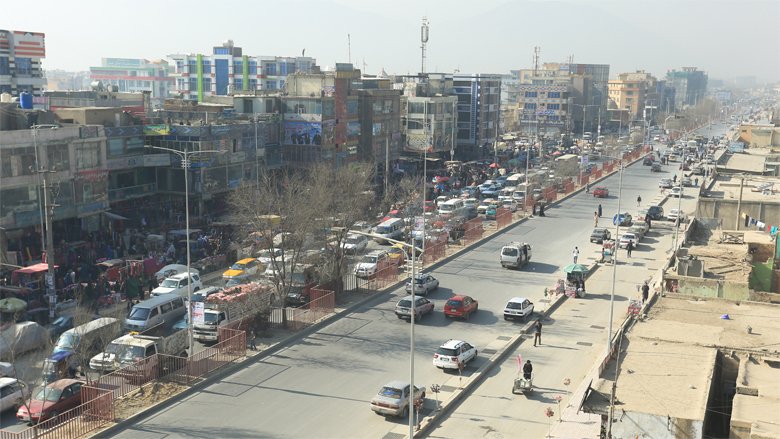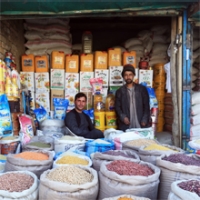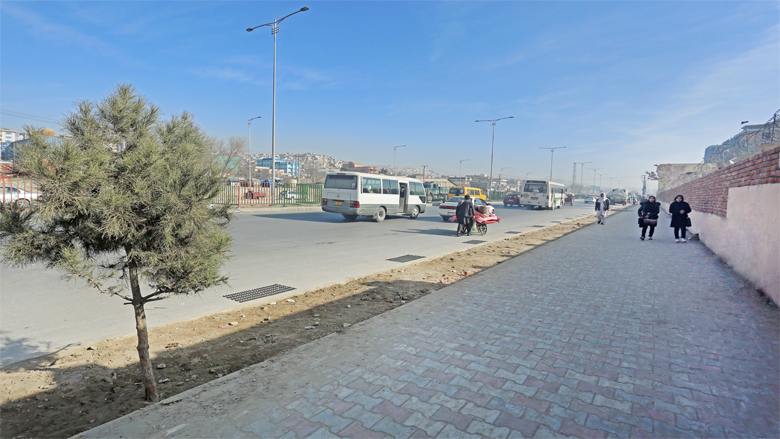KABUL CITY – Wide roads with cars driving by, sidewalks filled with chatty pedestrians, and streetlights that twinkle in the evening haze add to the liveliness of a Kabul neighborhood. Shopkeeper Bashir, 37, glances out the window as he deals with a stream of customers. The locality’s new face has been very good for business and he has not had a chance to touch his cup of chai (tea).
Bashir is one of many shop owners in Kabul, the capital city of Afghanistan. The reconstruction of the main road outside his shop has ensured that he no longer has to deal with dust and mud, and this has improved the footfall in his large superstore. “After the road was reconstructed, my sales increased by 30 percent,” he says. “Now I open early and close late due to the constant stream of customers.”
The rehabilitation of the locality, including the newly paved main road, new sidewalks, and streetlights, was carried out under the Kabul Urban Transport Efficiency Improvement (KUTEI) project. “I was born and grew up here and so far I have never seen the kind of work that KUTEI has done,” says a grateful Bashir. “The road is modern and systematic, the culverts, green spaces, footpaths, are all designed in a well-planned manner, and street lighting at night makes the area safe, bright and beautiful.”
Kart-e-Naw road is one of the main roads of Kabul city connecting two major parts, the east and the city center. It links four Kabul Municipality districts, improving transit for thousands of commuters. To date, KUTEI has completed the rehabilitation projects of six main roads in the city.
With funding support from the Afghanistan Reconstruction Trust Fund (ARTF), KUTEI targets the improvement of transport services through a package of interrelated interventions to build Kabul Municipality’s capacity.
Kabul Municipality, through KUTEI, started the reconstruction of Kart-e-Naw road in 2015 and inaugurated it in 2017. The Kart-e-Naw road reconstruction project, which included two main roads and service roads totaling 4.9 kilometers in length, also covers a large bus station, sidewalks, drainage system, and streetlights.



